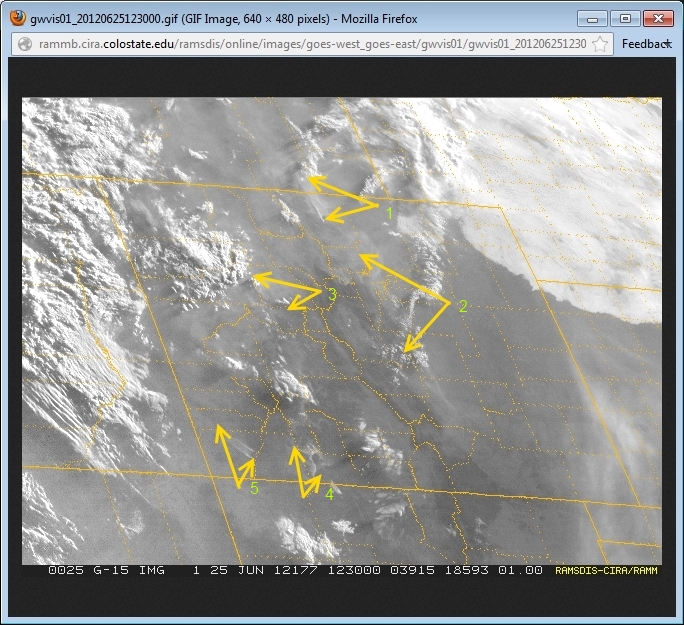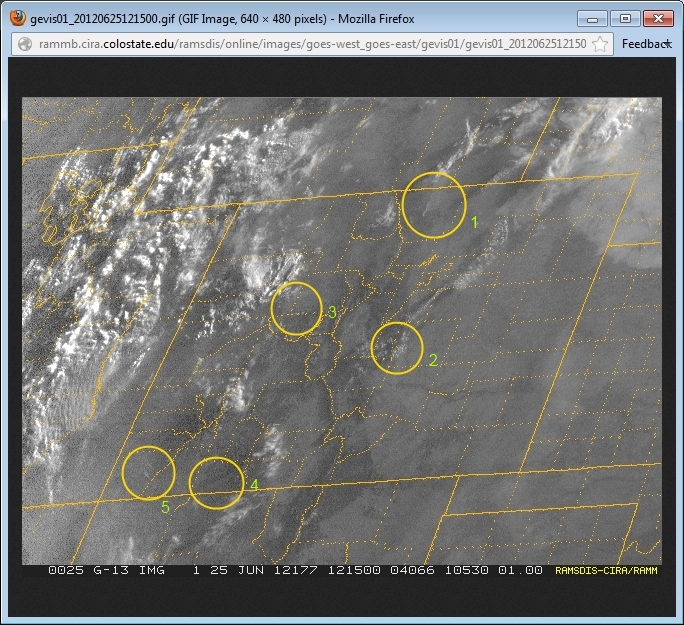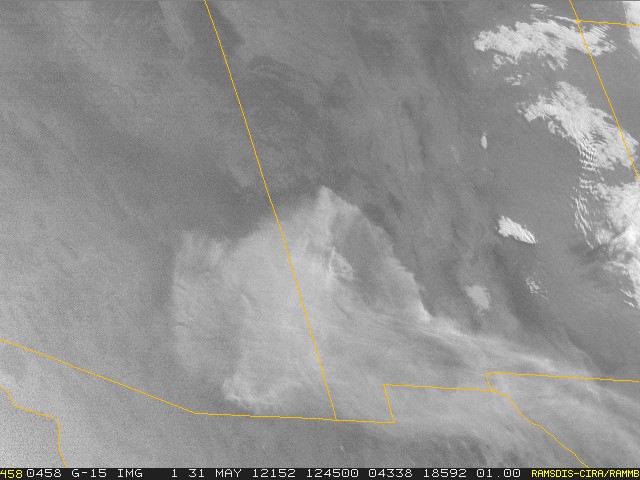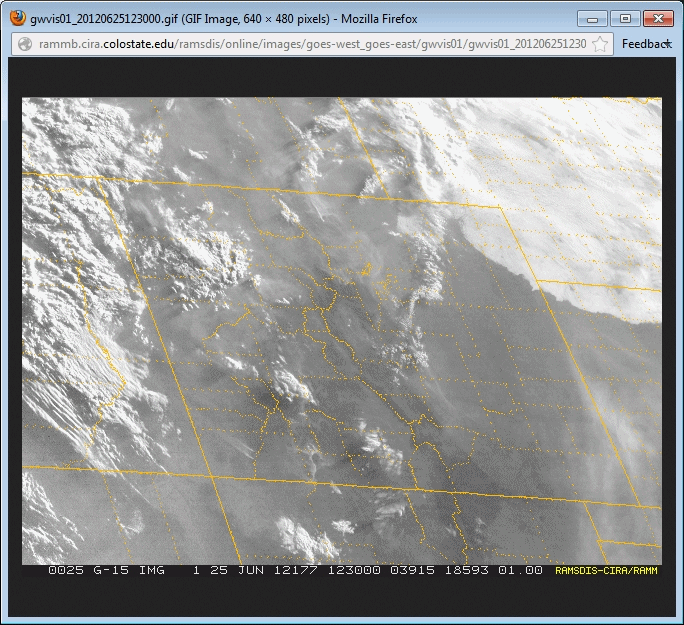New Mexico’s Whitewater-Baldy and Colorado’s High Park Fires: Case(s) of the “Disappearing Smoke” – Differences in Visible Smoke Detection – GOES 15 vs GOES 13
Louie Grasso and Jeff Braun
Updated June 25, 2012
Now: The Whitewater-Baldy Fire was a very large wildfire that existed over southwestern New Mexico during the last couple of weeks of May and into June 2012. At nearly 300, 000 acreas in size, it it easily the state’s largest wildfire in modern times. The High Park fire in northern Colorado was at 83,205 acres during the last week of June 2012 with only 45 percent containment and at that time was the second-largest fire in Colorado’s history.
Geostationary satellites can be an excellent tool in tracking the movement of “new” and “old” smoke. New smoke from fires in the late afternoon tends to be optically thick enough to show up well in imagery from both GOES-15 and GOES-13 satellites (the “visible” band on-board these two satellite is centered near 0.67 um). However, in the early morning hours, “old” smoke from a previous day’s fire may be optically thin in the visible band. As a result, certain sun-smoke-satellite geometries are required for old smoke to appear in visible imagery for each of these satellites.
The Explanation: Solar energy at 0.67 um is scattered in a forward direction from smoke. Therefore, “old” smoke will be more prevalent in GOES-15 (West) visible imagery during sunrise (Figure 1). In contrast, “old” smoke can be difficult to detect in GOES-13 (East) visible imagery at the same time (Figure 2). Both of these images were taken at 1245 UTC. The difference in the appearance of the smoke in both Figure 1 and Figure 2 is due to the physical and optical properties of the smoke in relation to the angle of the sun and therefore result in smoke plumes that can seem to disappear during sunrise if looking from the “wrong” direction.
Here are some examples from the High Park fire taken on June 25, 2012.
The above example is a visible image from GOES West taken on the morning of June 25, 2012. Here you can easily see not only the High Park (1) fire in northern Colorado, but five additional Colorado fire/smoke plumes as well (see image below).

GOES West June 25 2012 Colorado fires 1. High Park 2. Waldo Canyon 3. Treasure 4. Little Sand 5. Weber
The GOES East vantage point, however, is severely lacking fire/smoke detail since the morning sun angle is all wrong (see below).
The only fire that is somewhat easily seen is the huge High Park fire. However, even then, much of the smoke detail has been lost. The actual locations of the same fires as seen in the GOES West imagery are circled in the GOES East imagery below for the same time period. The circles denote each fire area.

GOES East - June 25 2012 - Colorado Fires - GOES West June 25 2012 Colorado fires 1. High Park 2. Waldo Canyon 3. Treasure 4. Little Sand 5. Weber
Into the Future: GOES-R ABI will have a visible band centered near not only at 0.67um but also another centered near 0.47 um. These bands are similar to the observed JPSS imagery below (figure 3 – Red and figure 4 – Blue) taken of the Whitewater-Baldy fire in May of 2012.
At 0.47 um (blue), solar energy scatters in a backward direction more than at 0.67 um for a given particle size. One consequence is that “old” smoke will appear in imagery at this wavelength while, at the same time, seem to be absent in imagery at 0.67 um (red – which scatters in the forward direction more than at 0.47 um for the same particle size). Also note the difference in the appearance of the smoke over eastern New Mexico and the Texas Panhandle between the two wavelengths. Both visible bands available on the GOES-R ABI will provide an improvement in the detection and tracking of smoke from a single satellite.






